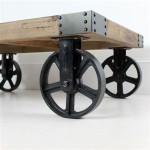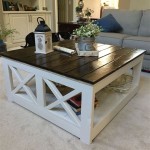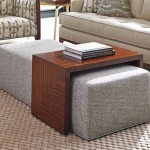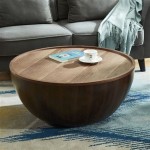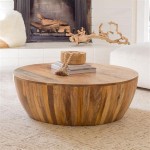Should a Side Table Be Higher Than the Sofa? A Guide to Optimal Placement
The placement of furniture within a living space significantly impacts both its functionality and aesthetic appeal. One common point of consideration is the appropriate height relationship between a sofa and its accompanying side table. While there is no universally "correct" answer, understanding the principles of ergonomics, visual balance, and intended use can guide informed decisions regarding side table height in relation to the sofa.
The question of whether a side table should be higher than the sofa is nuanced and depends heavily on the specific characteristics of the sofa, the side table, and the intended use of the table. Factors to consider include the sofa's arm height, the table's surface area, the user's needs for reaching items, and the desired visual aesthetic of the room. Ignoring these considerations can result in an awkward and impractical furniture arrangement.
Typically, the ideal side table height is either at, slightly below, or slightly above the sofa's arm height. The goal is to create a comfortable and accessible surface for placing drinks, books, remote controls, or other items without requiring undue stretching or bending. While a side table significantly higher than the sofa arm might offer a unique visual statement, it may prove cumbersome and impractical for everyday use. Conversely, a table that is too low can be equally inconvenient, forcing users to reach downwards uncomfortably.
Ergonomics and Accessibility: Prioritizing Comfort
Ergonomics plays a crucial role in determining the optimal height for a side table. The primary function of a side table is to provide a convenient surface for placing and retrieving objects. When a side table is significantly lower than the sofa's arm, users must bend over or reach down awkwardly to access items. This can be particularly problematic for individuals with mobility issues or back problems. On the other hand, a side table that is considerably higher than the sofa arm may require users to reach upwards, potentially leading to spills or discomfort.
The ideal ergonomic height for a side table allows users to easily reach for items without straining their back, neck, or arms. A general guideline suggests that the side table surface should be within a few inches of the sofa's arm height. This allows for a natural and comfortable reach. For example, if a sofa has an arm height of 24 inches, a side table with a height between 22 and 26 inches would likely be suitable. This range provides enough surface area for placing objects while maintaining easy accessibility. Measurements should be taken considering the sofa's cushion compression. A new sofa cushion will compress over time.
The specific needs and preferences of the individuals using the space should also be taken into account. For elderly individuals or those with physical limitations, prioritizing accessibility and ease of use is paramount. In such cases, erring slightly on the higher side, perhaps matching the arm height exactly, may be more beneficial. Consider the frequency of use of the side table. Tables used for regularly accessed items should ideally be within the easiest reach. For decorative purposes, a slightly higher or lower table may be acceptable, as functionality is less critical.
Visual Balance and Aesthetic Harmony
Beyond ergonomics, the visual relationship between a sofa and its side table contributes significantly to the overall aesthetic of a room. The height of the side table can either enhance or disrupt the visual balance of the space. A side table that is disproportionately high or low can appear awkward and out of place. Aiming for visual harmony creates a more pleasing and cohesive design.
Consider the overall style of the room when determining the appropriate height for the side table. In a more formal setting, a side table that closely matches the sofa's arm height may create a sense of symmetry and order. In a more casual or eclectic setting, a slightly higher or lower side table can add visual interest and personality. However, even in less formal settings, maintaining a degree of proportionality is essential. Avoid extremes that might detract from the overall design.
The shape and design of the side table also influence its perceived height. A side table with a slender base and a small tabletop may appear taller than a side table with a wider base and a larger tabletop, even if their actual height is the same. Similarly, the color and material of the side table can affect its visual weight. A dark-colored side table may appear more substantial than a light-colored one, potentially requiring a slightly lower height to maintain visual balance. Incorporating these subtle visual cues into the decision-making process can lead to a more refined and aesthetically pleasing outcome.
The arrangement of other furniture in the room can also influence the perceived height of the side table. A side table placed next to a tall floor lamp, for instance, might benefit from being slightly taller to create a sense of visual cohesion. Conversely, a side table placed next to a low coffee table might appear too tall if it is significantly higher than the sofa's arm. Considering the surrounding furniture and their respective heights helps to create a balanced and harmonious visual composition.
Intended Use and Functionality: Tailoring to Specific Needs
The primary function of the side table should also inform its height. A side table intended primarily for holding drinks and small snacks may require a different height than a side table used for reading or working on a laptop. Consider the specific activities that will be performed at the side table and choose a height that facilitates those activities.
If the side table is primarily used for reading, a slightly higher height may be beneficial, providing a more comfortable surface for placing books and magazines. A higher table can also create a more natural reading angle, reducing strain on the neck and eyes. However, ensure that the height is not so high that it obstructs the view of the television or other focal points in the room.
For side tables used for working on a laptop or other electronic devices, the ideal height will depend on the user's sitting posture and the type of device being used. A slightly higher table may be necessary to accommodate the screen height and allow for comfortable typing. However, it is also important to ensure that the height is not so high that it causes the user to hunch over or strain their wrists. Experimenting with different heights and positions can help determine the most comfortable and ergonomic setup.
If the side table is intended to hold a lamp, the height should be considered in conjunction with the lamp's height. The combined height of the table and lamp should provide adequate lighting for the surrounding area without being overwhelming. A taller side table may be necessary to accommodate a shorter lamp, while a shorter side table may be more suitable for a taller lamp. Consider the overall lighting scheme of the room when making this decision.
Finally, consider storage needs. If the side table features drawers or shelves, the height of these storage compartments should be taken into account. A taller side table may provide more storage space, while a shorter side table may be more accessible for reaching items stored on lower shelves. Balance the desire for storage with the need for ergonomic comfort and visual balance.
Ultimately, determining whether a side table should be higher than the sofa involves a careful consideration of ergonomics, visual balance, and intended use. There is no single "correct" answer, as the ideal height will vary depending on the specific characteristics of the furniture, the individual's needs, and the overall design aesthetic of the room. By carefully weighing these factors, individuals can make informed decisions that result in a comfortable, functional, and visually pleasing living space.
The material of the side table and sofa are also important. A glass side table presents a different visual weight to a wooden or metal table. Sofa material ranging from leather to fabric all influence how a side table is perceived. Color plays a similar role in the decision making process.

How To Pick The Right End Tables For Your Sofa

How To Pick The Right End Tables For Your Sofa

How To Pick The Right End Tables For Your Sofa

How To Pick The Right End Tables For Your Sofa

Should I Have A Coffee Table Higher Than Sofa Wehomz

End Table Heights

What Is The Difference Between A Console Table And Side Living Spaces

Can A Coffee Table Be Higher Than Couch Cool Tables Big Sofa

How Tall Should End Tables Be Higher Than The Couch

How To Design A Living Room Our Go Rules And When It S Ok Break Them Emily Henderson
Related Posts

